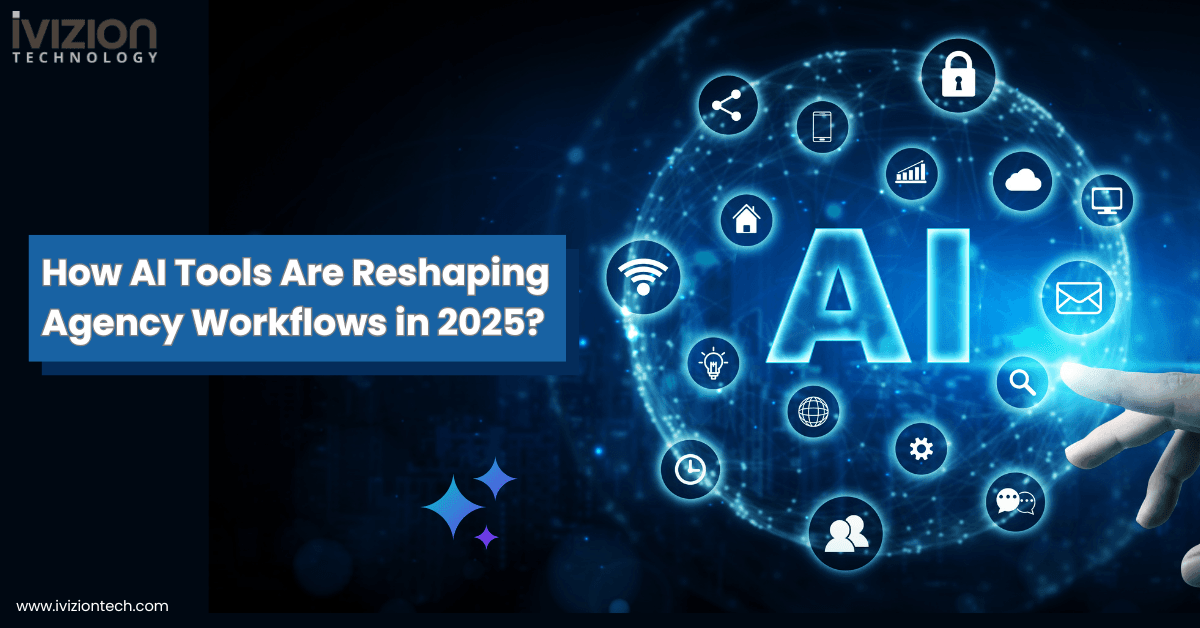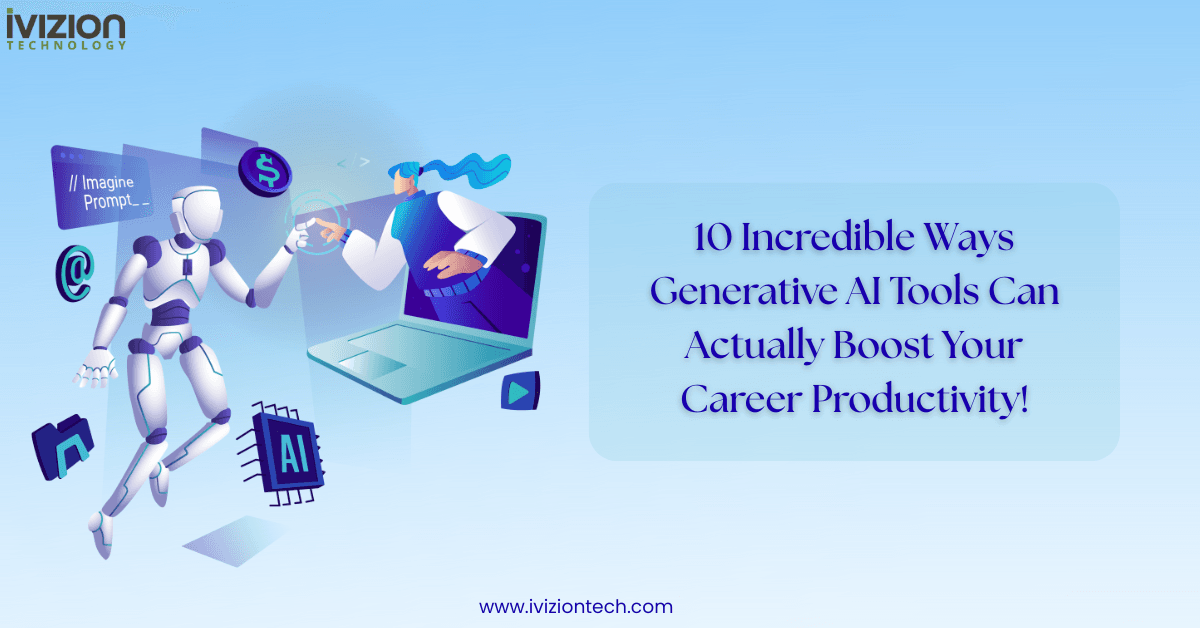
How AI Tools Are Reshaping Agency Workflows in 2025?
You’ve probably noticed it already — the way work feels a bit different now. Deadlines are shorter. Clients expect everything faster. There’s more to do and less time to do it.
And right in the middle of that chaos, AI quietly walks in and says, “Hey, I can help.”
That’s what’s happening in 2025. AI tools are reshaping agency workflows in ways that felt impossible just a few years ago. It’s not just tech talk anymore. It’s real, it’s practical, and it’s changing how teams work day to day.
How AI Tools Are Reshaping Agency Workflows in 2025?

Let’s be honest — agency life has always been a bit messy. Projects overlap. People wear too many hats. Communication gets lost in Slack threads.
But now, AI is helping tidy that up.
- Brainstorms don’t drag on forever. Tools can scan data, surface trends, and give you a list of starting points in minutes.
- First drafts aren’t painful. AI can build a rough structure so you’re never staring at a blank page.
- Reports are faster. Instead of digging through spreadsheets, tools summarize what’s working and what’s not.
- Project tracking feels smoother. You get reminders, insights, and even predictions before something slips.
It’s like having an invisible assistant that never gets tired or distracted.
The new kind of workflow
Here’s how it looks in practice.
1. The briefing stage feels lighter
Remember when writing a brief took half a day? Collecting data, checking competitors, building a structure — all before a single creative idea even showed up?
Now, AI can do that prep work in minutes. It gathers info, outlines angles, and gives you a solid foundation to start from. So when the team meets, you’re not guessing. You’re already halfway there.
2. Content creation speeds up
This one’s huge. AI can draft, rephrase, or summarize — whatever you need. The first version comes together fast. But here’s the catch: it’s never the final version.
That’s still you. The human editor. The storyteller. The person who adds tone, empathy, and that little spark that makes something feel real.
So the process becomes:
AI writes → You refine → Team reviews → Done faster than before.
3. Less admin, more creativity
If you’ve ever spent hours updating task lists or writing status updates, you’ll love this part.
AI can track who’s doing what, spot delays, and send reminders automatically. It’s not glamorous, but it frees you up to think — really think — instead of managing logistics all day.
4. Data finally makes sense
Agencies sit on a mountain of data. Performance stats, user behavior, engagement numbers — it’s a lot.
AI turns that chaos into patterns. You can see what works, what flopped, and what’s worth trying again. The best part? It’s fast. You don’t wait for monthly reviews anymore. You can tweak campaigns on the fly.
5. Clients feel more in the loop
Ever had a client ask for an update you weren’t ready to give? With AI tracking progress and performance, you always have something to show.
Quick insights. Clear numbers. No guessing.
It makes your agency look organized, which clients love.

But it’s not all smooth sailing.
Here’s the honest part. This shift isn’t easy.
- Some people don’t trust AI yet. They think it’ll replace them.
- Others use it too much and lose their brand voice completely.
- Tools make mistakes. Sometimes, confidently wrong ones.
- And yeah, it takes time to build the right balance between automation and authenticity.
So it’s not about jumping all in. It’s about testing, adjusting, and figuring out what actually makes your team better — not just faster.
The human factor still matters.
With all this talk about automation, it’s easy to forget something important: people still matter most.
Sure, AI tools are reshaping agency workflows, but creativity, empathy, and storytelling — that’s still human territory.
Clients don’t just pay for words or ads or graphics. They pay for understanding. For insight. For that spark that makes something connect.
AI can write, but it can’t feel. That’s your advantage.
Why EEAT still counts
There’s this term floating around — EEAT: Experience, Expertise, Authoritativeness, and Trustworthiness.
Basically, it means “prove you’re real.”
As AI-generated content floods the internet, trust becomes everything. When your agency uses AI tools, you still have to show that there’s a real person behind the screen — someone with experience and opinions.
So make sure your content still feels lived-in. Add stories. Add examples. Add faces and names.
AI helps you write faster. EEAT helps people believe what you say. You need both.
What smart agencies are doing now
I’ve seen a few agencies absolutely nail this shift. Here’s what they have in common:
- They experiment a lot. They test tools, workflows, prompts — and keep what works.
- They train their teams. Everyone learns how to use AI well, not just rely on it blindly.
- They stay transparent with clients. They explain how AI helps improve speed and consistency.
- They focus on creativity. The tools do the mechanical stuff; humans handle the emotional part.
- They review everything. No piece of content goes live without a human read-through.
They’re not trying to “beat” AI. They’re working with it.
What this means for you
If you’re running or working in an agency, this change is already at your doorstep. You don’t have to overhaul everything overnight, but you should start testing.
- Try using AI for research or outlines.
- Track how much time it saves.
- Use that time for deeper creative work.
- Keep reviewing for tone, truth, and trust.
The point isn’t to replace your team — it’s to make the boring parts faster so you can focus on the fun ones again.
FAQs
Q: How exactly are AI tools reshaping agency workflows?
A: They’re automating repetitive stuff — research, reporting, basic drafts — and freeing people up to focus on creativity, strategy, and client work.
Q: Can AI replace human creativity?
A: Nope. It can help, but it doesn’t understand emotions, timing, or cultural nuance. That’s where humans shine.
Q: How can agencies make sure AI doesn’t lower quality?
A: Keep human editors in the loop. Train your team. And make EEAT (Experience, Expertise, Authoritativeness, Trustworthiness) part of your process.
Q: Is using AI in client work risky?
A: Only if you hide it or use it carelessly. Be transparent and stay involved in every step.
Q: What’s one simple way to start?
A: Pick one small task — like brainstorming ideas — and let AI help. Build from there.
If you’re wondering whether AI is just a trend — it’s not. It’s already woven into how agencies operate.
But that doesn’t mean we’re losing the human side of the job. In fact, it might bring it back. When the busywork fades away, people finally have time to think again.
So yeah — AI tools are reshaping agency workflows, but it’s still your ideas, your taste, your judgment that make the difference.
Let the tools handle the grind. You handle the spark.
That’s the future of agency work for the upcoming time.


